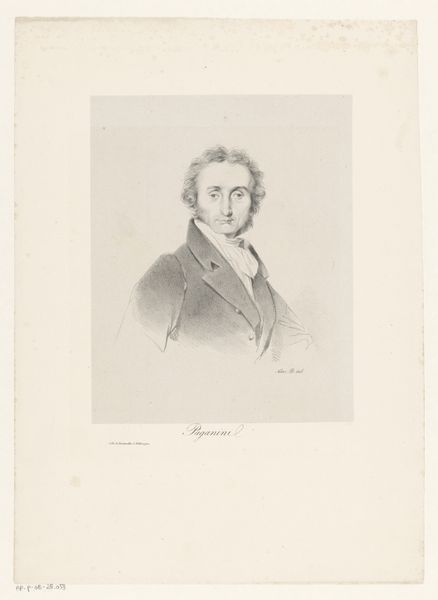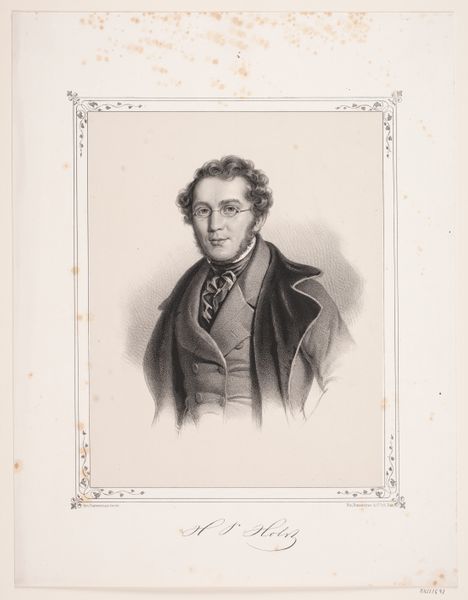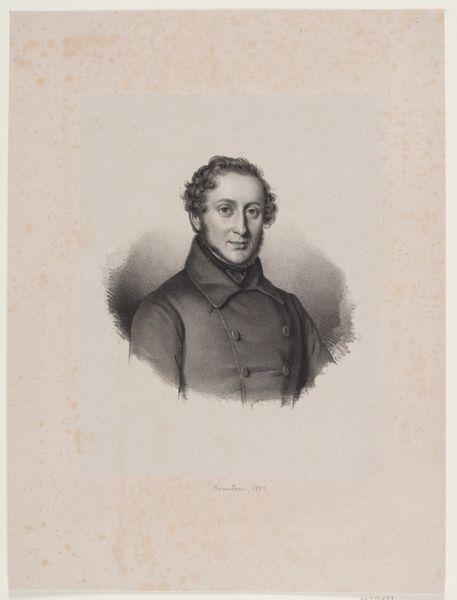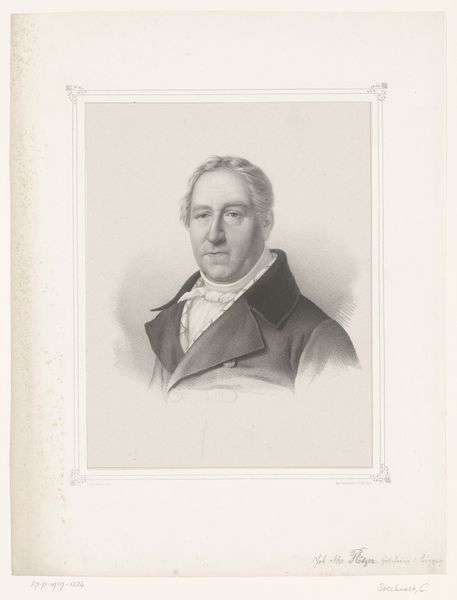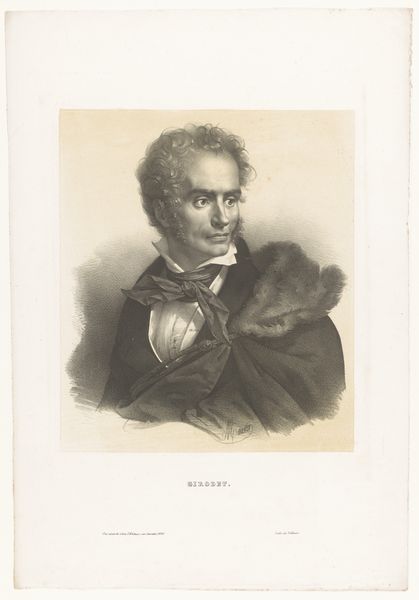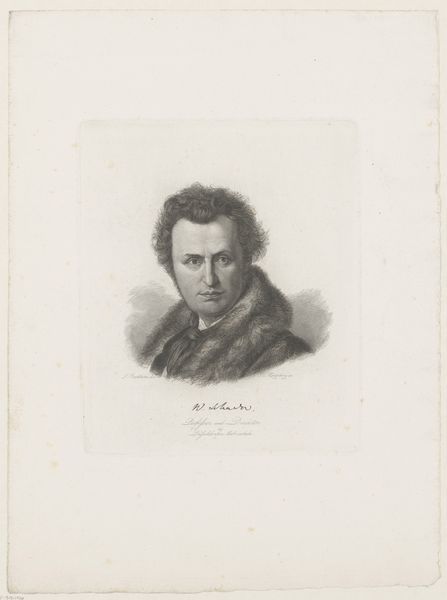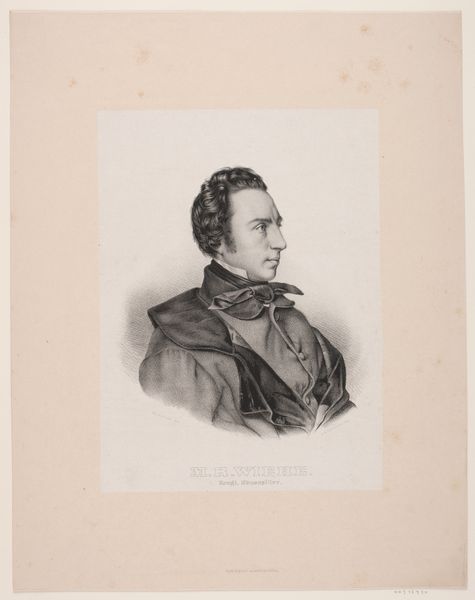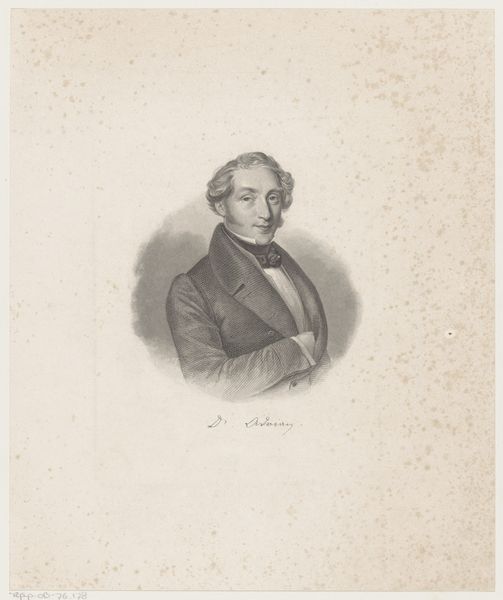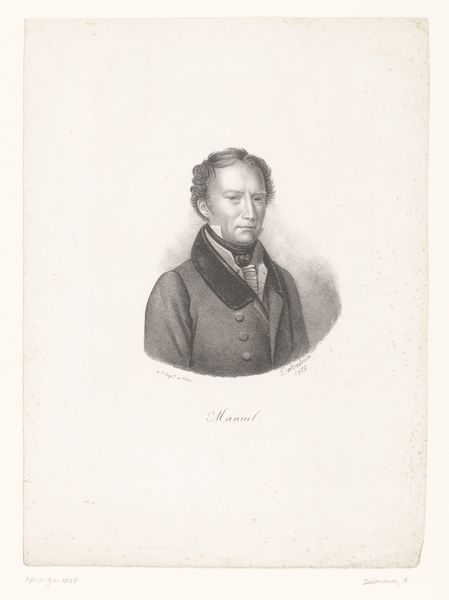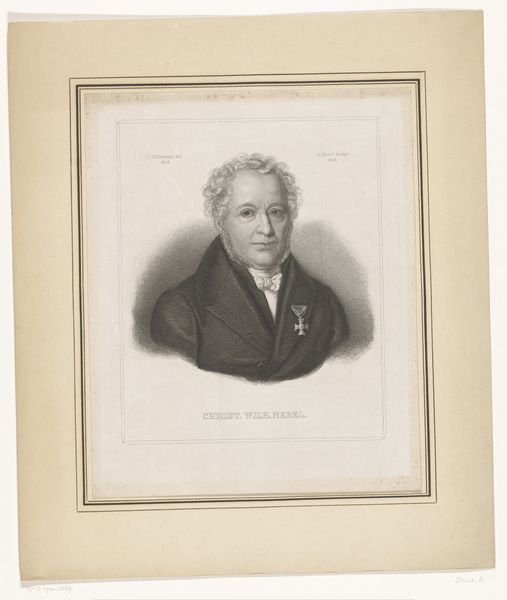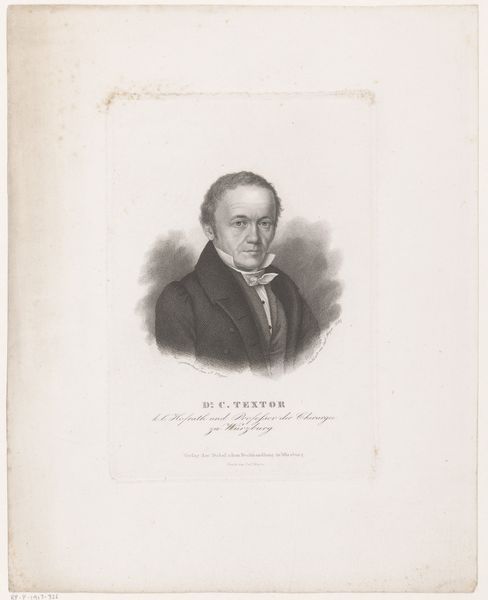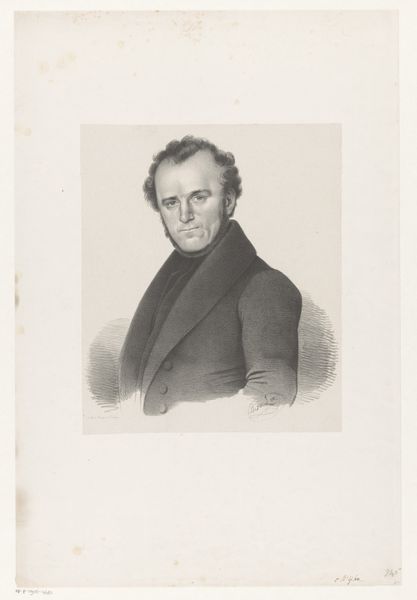
engraving
#
portrait
#
romanticism
#
engraving
Dimensions: height 494 mm, width 393 mm
Copyright: Rijks Museum: Open Domain
This is a portrait of Jan Willem Pieneman, created by Nicolaas Pieneman using the technique of etching. Etching is an indirect printmaking process, like engraving, that depends on the controlled corrosion of a metal plate by acid. To make this portrait, the artist covered a metal plate with a waxy, acid-resistant substance called a ground, then drew the image of Jan Willem Pieneman into the ground with a stylus. After this, he immersed the plate in acid, which bit into the metal where the ground had been removed. The plate was then inked, and the ink was carefully wiped from the surface, remaining only in the etched lines. Finally, the plate was pressed onto paper, transferring the ink and creating the print. The success of the print depends on the ability to produce many identical images from a single matrix, thereby lowering the cost of each individual image. Etching, like other printmaking techniques, played a pivotal role in the Industrial Revolution and the rise of consumer culture, as it facilitated the mass production and distribution of visual information. As you can see, an understanding of materials, making, and context are important in understanding the full meaning of an artwork, challenging traditional distinctions between fine art and craft.
Comments
No comments
Be the first to comment and join the conversation on the ultimate creative platform.

